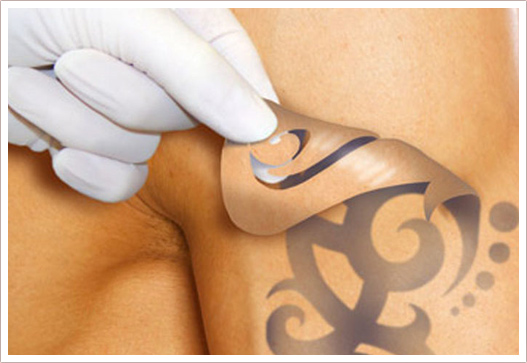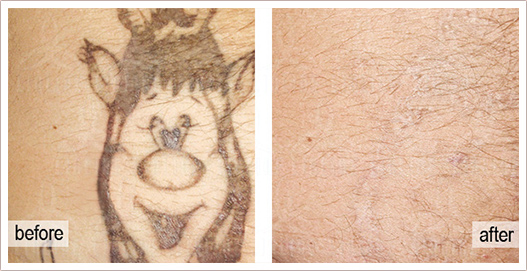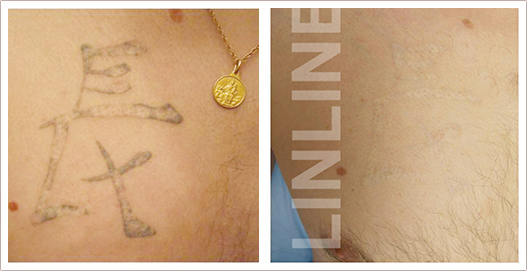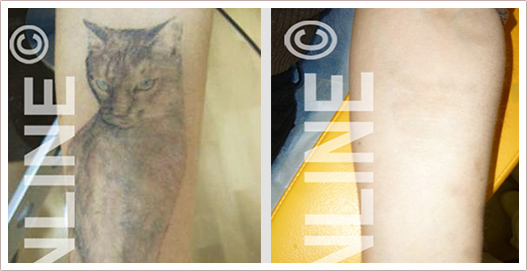
Deep Acoustic Wave™ Technology(Tattoo Removal)
The use of longwavelength lasers and broad bandwidth light sources with pulse durations of tens to hundreds of milliseconds is not useful for tattoo removal. Moreover, it may cause uncontrollable overheating and coagulation of the surrounding tissues, leading to harmful consequences.
To destroy tattoo dye, a Qswitched laser is traditionally used with the pulse duration set to one to tens of nanoseconds. It results in powerful acoustic waves capable of (literally) pulling the matter apart and starting to break the intermolecular bonds of the ink’s particles.
During the pulse, the ink particles do not have enough time to distribute energy to the surrounding tissues in the form of heat. Hence, the thermal impact on the tissues is minimal. The crucial imperfection of the traditional method is that it necessitates many repetitive procedures because the radiation of a single pulse is fully absorbed by the upper layers of dye, yet does not reach those that are deeply embedded. Efforts to get satisfactory results via either fluence increase or repetitive passes over the same area during the session do not yield the required result. On the contrary, it leads to skin damage.
A new method of tattoo dye photodestruction (Deep Acoustic Wave Technology™) leads to faster tattoo removal.
This method allows for the thorough destruction of dye, including even the most deeply located particles, while the surrounding tissues that have no pigmentation suffer negligibly small traumatisation and preserve their natural pigmentation.
Contrary to the classic mechanism of Qswitched lasers (works through single laser pulses), the method used in this laser system facilitates most amateur and professional tattoo ink removal. Each pulse of the train causes the fragmentation of a tattooed layer so that the next pulse of the train can reach into the deeper layer through the “dye free” gateway that is created. The process described above involves a layerbylayer fragmentation of all dye particles.
Laser pulses break up the tattoo pigment while avoiding all other vital skin structures. Instead of attempting to demolish the entire volume of dye by a single powerful laser light wave, the goal is achieved via several passes of reduced power laser waves, causing less traumatisation. Another advantage of the MULTILINE™ system is that the operator can change the settings such that a dye of a different colour is dissolved with optimal wavelength laser light — 540 nm, 694 nm, 755 nm, and 1079 nm.











